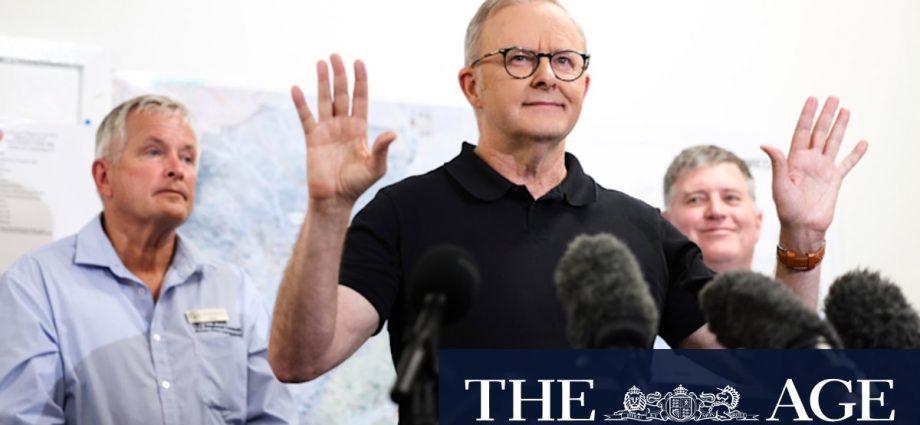Albanese pointed to industry and government calculations that show a household battery can cut a typical power bill by about $1000 a year. It does this by charging up on free solar power from rooftop panels during the day and discharges it at night, when the electricity grid hits peak demand and price.
Four million Australian homes have rooftop solar panels, but only about 250,000 have batteries. Widespread battery uptake would also reduce electricity demand at peak times, putting downward pressure on power prices for households without solar panels or batteries.
A typical household battery costs $10,000 or more, with installation adding at least several thousand to the bill. That means homeowners could be left facing a decade-long wait until they have recouped their expenditure, even with Labor’s discount.

Prime Minister Anthony Albanese visits a sheep farm owned by Martin Eggerling and Rebecca Eggerling, south of Longreach, Queensland, to inspect flood damage.Credit: Alex Ellinghausen
Power bills have risen by up to $500 since Labor formed government and pledged an ambitious rollout of renewable energy that it said would supply cheaper, greener electricity to swiftly cut bills.
Since then, the renewables rollout has faltered, the prices of coal and gas have spiked due to Russia’s invasion of Ukraine and power bills have gone up.
Loading
Opposition Leader Peter Dutton has seized the opportunity to attack the government’s energy policy, proposing instead to build seven nuclear plants and reserve gas for domestic use in the meantime.
Labor is doubling down on its promise to boost the share of renewables to 82 per cent of the grid by 2030, despite experts’ forecasts that the rollout is only on track to hit 60 per cent by the end of the decade.
Albanese said on Saturday, as he toured flood ravaged outback Queensland, that global warming was making natural disasters worse.
“What the science told us was that there would be more extreme weather events, so more frequent and more intense. That is what we’re seeing played out, not just here in Australia, but right around the world,” he said.
Labor’s scheme could be combined with assistance on offer from state governments. NSW provides a grant for household battery buyers of up to $2400, while in Victoria, a four-year interest-free loan of up to $8800 is on offer.
The discount on offer to battery buyers will decline over the years until 2030, as purchase prices are expected to decline. The rate of subsidy can be adjusted year-by-year, guided by uptake under the scheme.
Small businesses and communities would also be eligible for subsidies, under different terms.
Cut through the noise of federal politics with news, views and expert analysis. Subscribers can sign up to our weekly Inside Politics newsletter.


